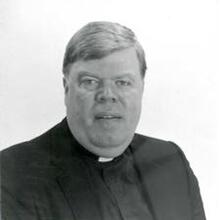Interpreting texts of Pope Francis has become a 24/7 worldwide industry. For those accustomed to the precision of the theological treatise, interpreting the pope’s thought is a challenge. His freewheeling interviews and informal sermons have permitted every commentator to construct his or her own Francis, complete with the cherry-picked quote that proves the pope endorses the commentator’s particular political-theological program. Early in his pontificate Francis has given an indication of one of his central concerns. But it is neither a program nor a theory. It is an image.
Three talks Pope Francis gave during September point to the face of Jesus as central to the pope’s spirituality, ethics and sense of ecclesial mission.
In the preface to his celebrated interview with Francis, published in America on Sept. 30, Antonio Spadaro, S.J., describes the furnishings of the pope’s austere room. It is the faces on the statues and icons that capture the journalist’s attention. “The spirituality of Jorge Mario Bergoglio is not made of ‘harmonized energies,’ as he would call them, but of human faces: Christ, St. Francis, St. Joseph and Mary.” When Francis offers a spiritual self-portrait, he describes himself as standing under the gaze of Christ. “I am a sinner whom the Lord has looked upon.” The pope illustrates this gaze of Christ by referring to Caravaggio’s “The Calling of St. Matthew,” a painting he had often contemplated in the Roman Church of Saint Louis of France in Rome. It is the gesture of Christ, not a simple interior movement of grace, that leads Bergoglio to a more authentic discipleship.
In his address to the International Federation of Catholic Medical Associations on Sept. 20, Pope Francis categorically condemned abortion and euthanasia. But his speech did not emphasize the customary philosophical, scientific and legal arguments. Rather, his critique appealed directly to the face of Christ. “Each one of us is invited to recognize in the fragile human being the face of the Lord, who, in his human flesh, experienced the indifference and loneliness to which we often condemn the poorest.”
The condemnation of abortion drew a parallel to the infant Jesus marked for destruction by Herod even before his birth. “Each child who is unborn, but is unjustly condemned to be aborted, bears the face of Jesus Christ, bears the face of the Lord, who, even before he was born, and then as soon as he was born, experienced the rejection of the world.” Similarly, the condemnation of euthanasia pointed to the face of Christ present in the elderly targeted for elimination. “Each old person, even if infirm or at the end of his or her days, bears the face of Christ. They cannot be discarded.”
The homily he delivered on Sept. 21 for the feast of St. Matthew returns to the gaze of Christ that leads to conversion. “Matthew feels in his heart the gaze of the Lord who looked upon him.... It changed his life. We say he was converted.” In the case of St. Peter, Christ’s glance leads to remorse and repentance. “So did Peter change, who, after denying his Lord then met his gaze and wept bitterly.” The countenance of Christ not only converts the sinner; it brings about a moral restoration that is nothing less than the re-establishment of human dignity. “And sinners…felt that Jesus had looked on them and that gaze of Jesus on them, I believe, was like a breath on embers…. Jesus lifted them up and gave them back their dignity.”
It is the destiny of the church to live under the haunting gaze of Jesus as he summons the church to mission. “All of us find ourselves before that gaze, that marvelous gaze, and we go forward in life, in the certainty that he looks upon us. He too, however, awaits us in order to look on us definitively and that final gaze of Jesus upon our lives will be forever. It will be eternal.”
Pope Francis’ September triptych on the face of Jesus bears nothing of the sentimental. Standing before the face of Christ is a call to repentance, to conversion of life and to costly solidarity with the innocents marked for death, just as it is a call to receive God’s fathomless mercy. Pope Francis speaks naturally on the level of vision and intuition. His rhetoric of the image will both attract and perplex. It is neither a proof nor a refutation. There are no explanatory footnotes. It is an unvarnished call for the church and every Christian to undergo reform by standing under the gaze of Christ. In the transforming light of that face, the rest will follow.








